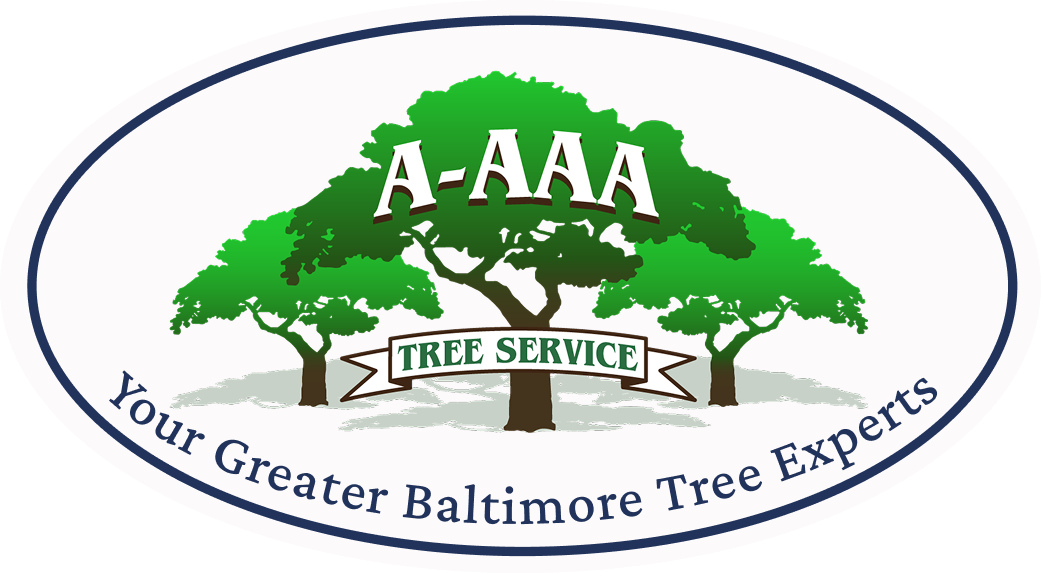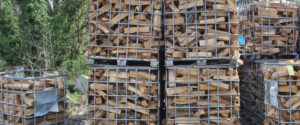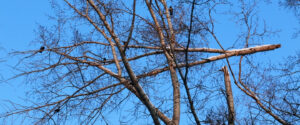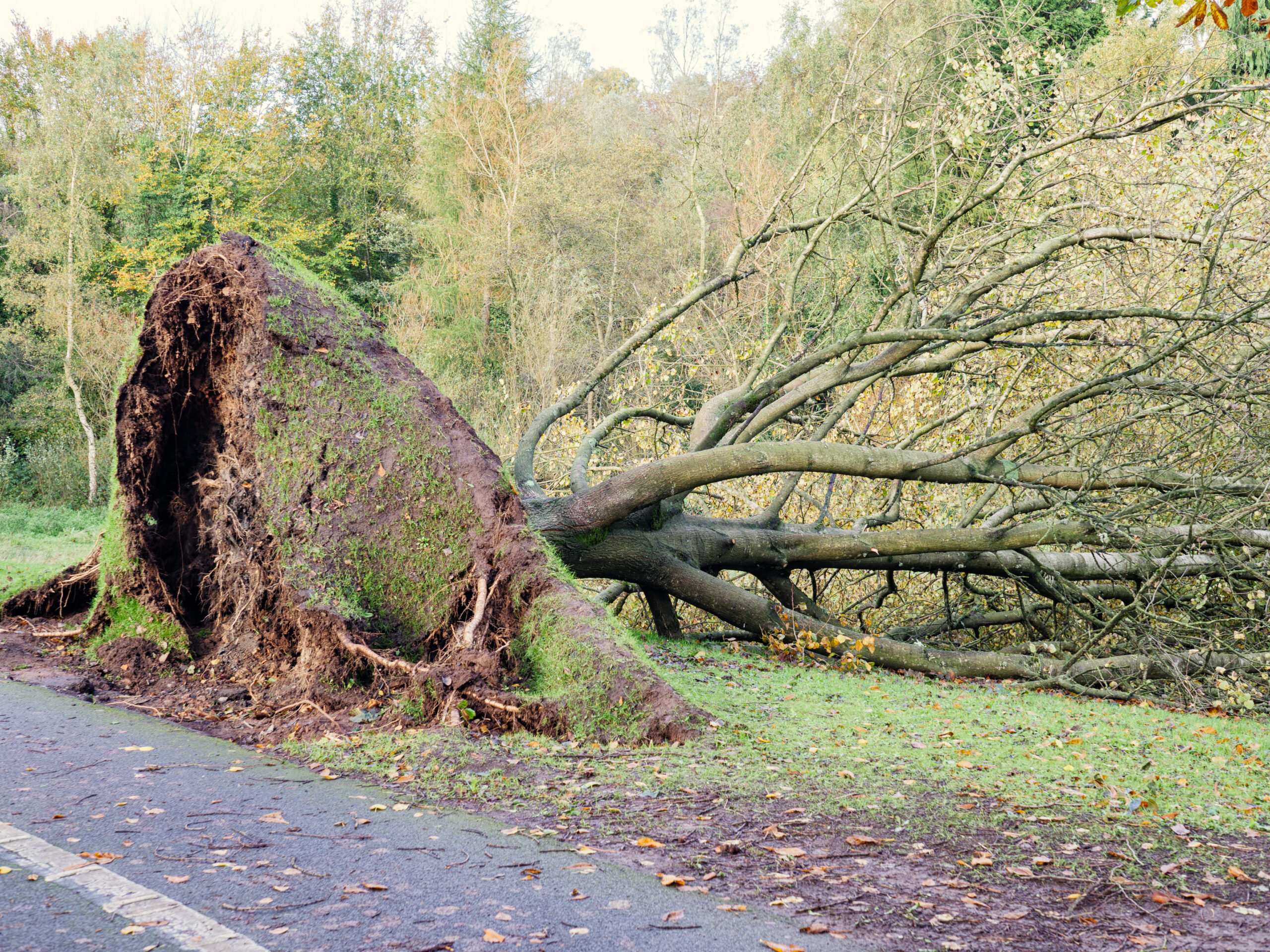Some trees don’t give second chances. One split trunk or slow lean can turn into a big problem fast. We’ve seen trees come down on fences, sheds, and even roofs – often when the signs were there weeks earlier. Whether you’re dealing with an aging tree or one that just doesn’t look right, here are 5 signs it may be time to schedule a professional tree removal before the damage is done.
Key Takeaways:
- Dead trees are dangerous and more likely to fail in a storm, necessitating tree removal.
- Insects and diseases, especially the emerald ash borer, can kill your trees and leave them hazardous and brittle.
- A trunk leaning 15 degrees or more is a significant risk on your property and demands immediate removal.
- Too many trees on your property can lead to them competing for space and limiting light for your grass or smaller plants.
- Storms can cause extensive damage to trees, sometimes necessitating removal if they can’t recover.
5 Signs You Need to Remove a Tree in the Greater Baltimore Area
Trees won’t announce when they’re failing, but they often give subtle clues if you know what to look for. From structural issues to declining health, certain warning signs can indicate it’s time to consider removal. Here are some of the most common ones we see on the job:
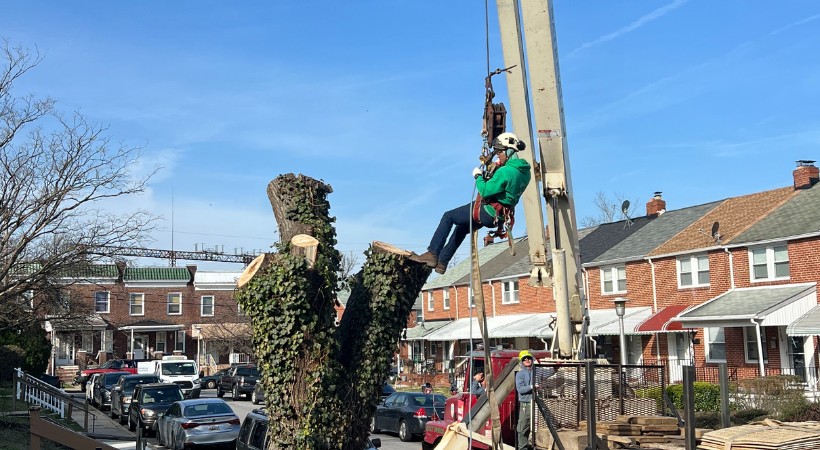
1. The Tree is Dead
A dead tree is an obvious sign that removal may be necessary, but some homeowners still ignore it until it’s too late. Dead trees do not have the same structural integrity as healthy, living ones, making them more prone to failure during a storm.
Some of the ways you can tell if a tree is dead include:
- It doesn’t grow leaves anymore
- There are mushrooms growing all over it
- Branches snap easily
- There are extensive holes from pest damage
If you have plenty of space on your property, a dead tree that isn’t close to your home or other structures may not need to be removed right away. In fact, it can serve as habitat for birds and small wildlife.
But if that dead tree is within striking distance of your house, garage, or kids’ play area, there’s no time to waste. Have a professional remove it to avoid serious damage and keep your family safe.
2. You See Symptoms of Insect and Disease Attacks
Some insects and diseases have the potential to kill a tree or leave it weak and prone to breaking. One of the biggest threats is the emerald ash borer (EAB), an invasive species that has killed millions of ash trees throughout the country. EAB leaves ashes brittle and prone to breaking in a storm.
Inspect your trees for signs of insects like EAB, such as exit holes in the bark or a lack of leaves. If you aren’t sure about your tree’s condition, have an expert inspect it to see if the insect damage is extensive enough to demand removal.

3. The Tree is Leaning or Showing Signs of Instability
Ideally, every tree should be straight up and down from the ground. However, this isn’t always the case, and trunks tend to exhibit some leaning. It shouldn’t be too worrying if it is only a few degrees from vertical, but anything more than 15 degrees is a sign of a potential hazard.
A tree that has recently developed a lean could be because of damage or weakening of the roots. Weak roots cannot adequately support it, and it is more likely to fall than a tree that is healthy and standing straight up.
4. There is Overcrowding on Your Property
A typical problem homeowners make when planting trees is that they grow too many or they put them too close to each other. It’s a simple mistake to make, as the saplings you plant are much smaller than a tree at its mature height. However, when you have too many trees or you put them in the wrong place, sometimes the only thing to do is to remove one or two to save the rest of your landscape.
Trees that are too close to each other will compete for sunlight, canopy space, and root area. Instead of having a single healthy tree, you’ll have two that are struggling to get enough nutrients.
Too many trees can also limit the ability of your grass and other lower vegetation from getting proper sunlight. Small tree species and plants won’t be able to perform photosynthesis, and you’ll have dead patches in your grass.
Before you rush to take a tree down, have a professional take a look. Sometimes a good trim is all it needs – and it might save you the cost and hassle of removal.
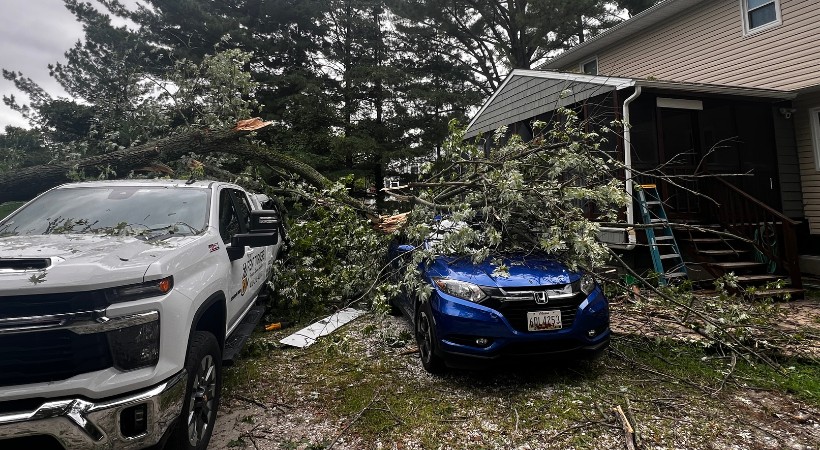
5. A Storm Has Heavily Damaged the Tree
No matter how sturdy and durable a tree may appear, storm damage can still weaken it or bring it down entirely. Storms can break branches or even cause large sections of the trunk to split.
After a storm, take the time to inspect your trees for damage. If it’s minor, a professional may be able to clean it up and use restoration trimming to help the tree recover. But if the damage is severe, removal may be the safest option for both your home and your family.
Frequently Asked Questions About When to Remove a Tree
Tree removal can bring up a lot of questions, like when it’s really necessary and what the process involves. To make it easier, we’ve answered some of the most common questions homeowners ask.
Are there ways to save damaged trees and avoid removing them in the Greater Baltimore Area?
Depending on the severity of the damage, there may be some ways to save the tree, such as:
- Trimming out the damage
- Cabling and bracing the weak sections of the canopy
- Improving soil health with mulching or fertilization
Is it possible to remove a tree too close to a structure?
Yes, though the job is often more dangerous and complex than removing trees in an open field. Removing them near a structure typically requires the use of a tree removal crane and complex rigging to avoid damaging the building.
What trees are most commonly removed – and why?
We regularly remove trees like oak, maple, tulip poplar, locust, pine, and beech – not because they’re bad trees, but because they’re some of the most common in our area.
The reasons for removal usually fall into a few key categories:
- Dead or decaying
- Diseased or structurally unsound
- Too close to buildings or utility lines
- In the way of construction or landscaping plans
- Causing concern for safety or liability
When It’s Time to Take a Tree Down, A-AAA Tree Service is the Team to Call
People remove trees for many reasons. Some may do it because they are too close to a structure, while others may want to remove one if it appears to be dead. Whatever the reason you have for removing a tree, ensure you trust the job to professionals who can do it safely and efficiently.
Our team at A-AAA Tree Service has experience removing all types of trees throughout the Greater Baltimore Area. We can inspect your tree, recommend removal if necessary, and safely eliminate it from your yard. If you need help with a dead or dangerous tree on your property, call us today at 410-321-0921 or request an estimate online.
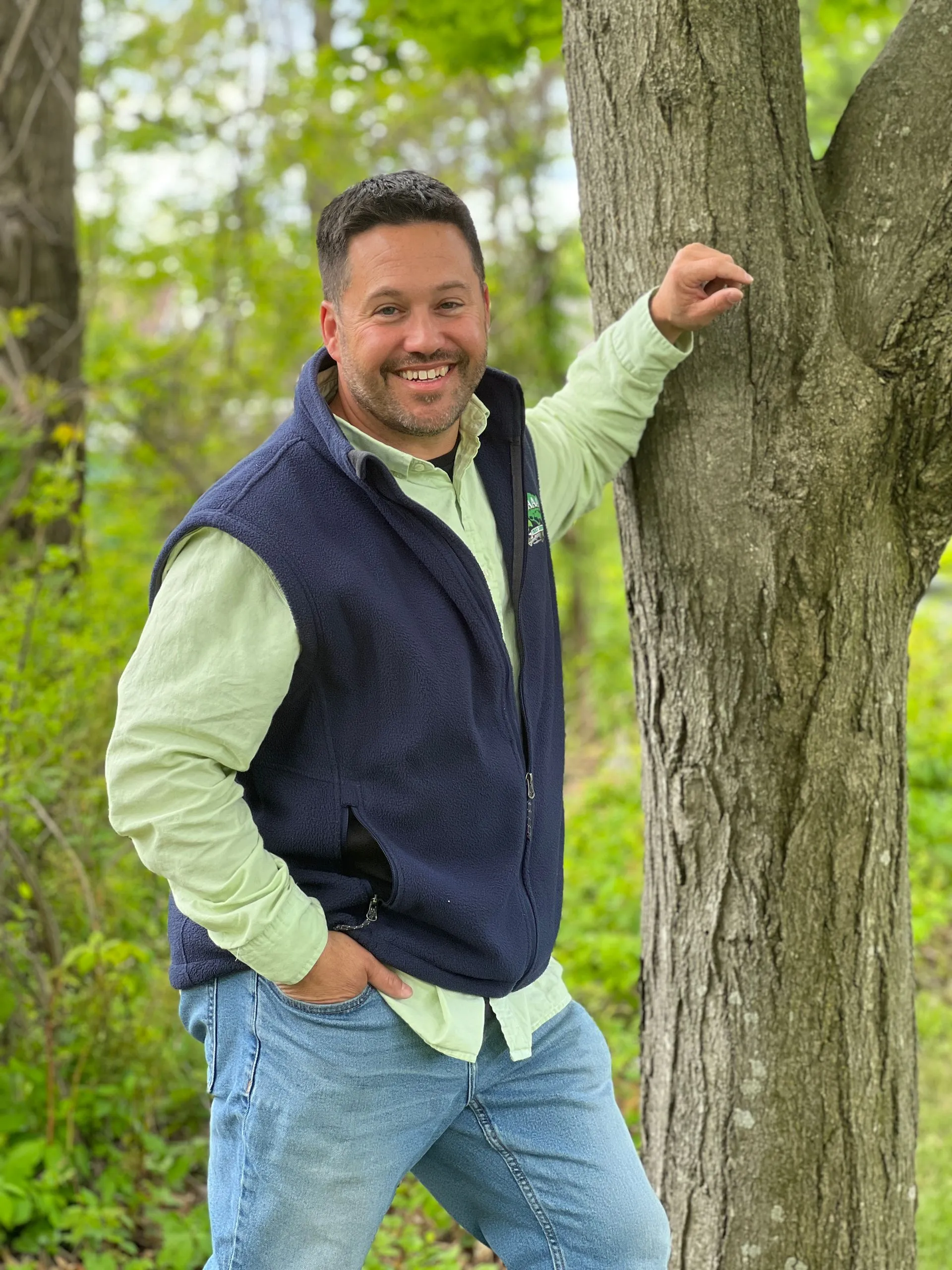
Andrew Senker got his first chance at management in 2003 when he started an IT consulting company that worked with some of the largest banks in the world. After 7 years with the firm, he transitioned to the wireless sector for 13 years, lending his expertise and ability to manage people and projects. In 2022, he purchased A-AAA Tree Service, determined to bring his knowledge to the tree service industry.
Related Articles
6 Reasons Why Buying Local Firewood Protects Trees and Communities
Learn why Baltimore County residents choose local firewood delivery to protect against invasive species and support the local economy.
Why Tight Space Tree Removal in Baltimore Requires Professional Expertise
Removing trees in Baltimore’s tight yards, next to buildings, or near utilities isn’t DIY work. See why professional expertise keeps your property protected.
Does Your Tree Need Trimming? 6 Signs Baltimore Homeowners Often Miss
Not sure if your tree needs trimming? These 6 warning signs help Baltimore homeowners catch problems early – before branches fall or costly damage is done.
